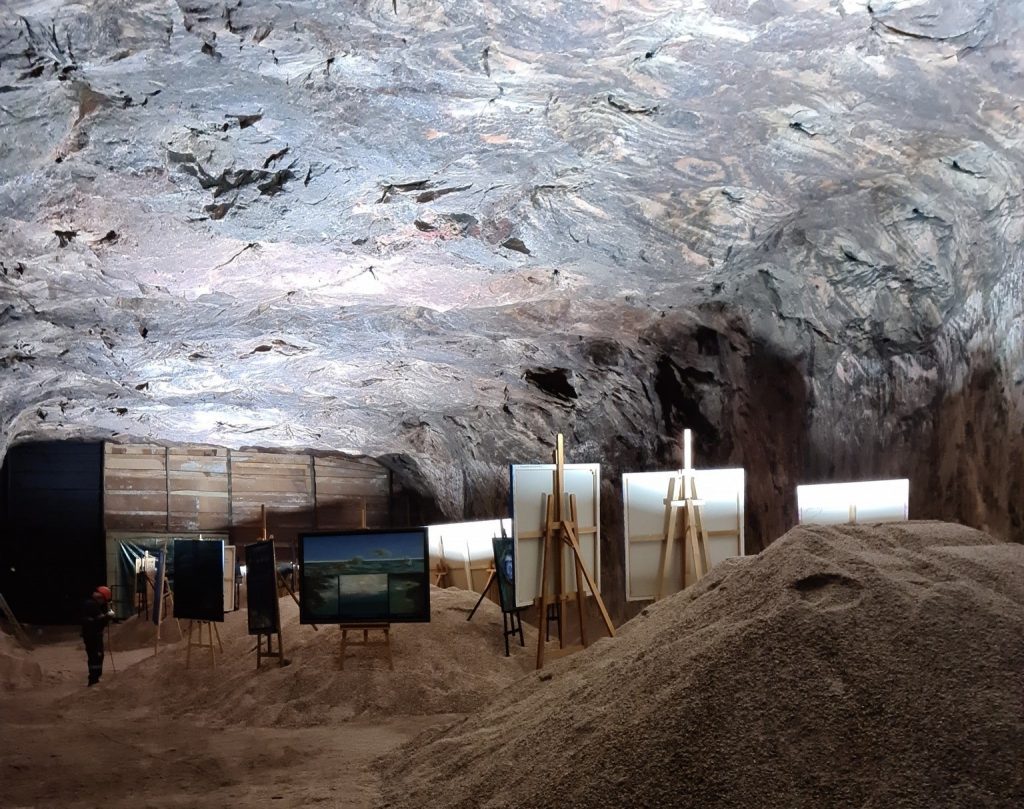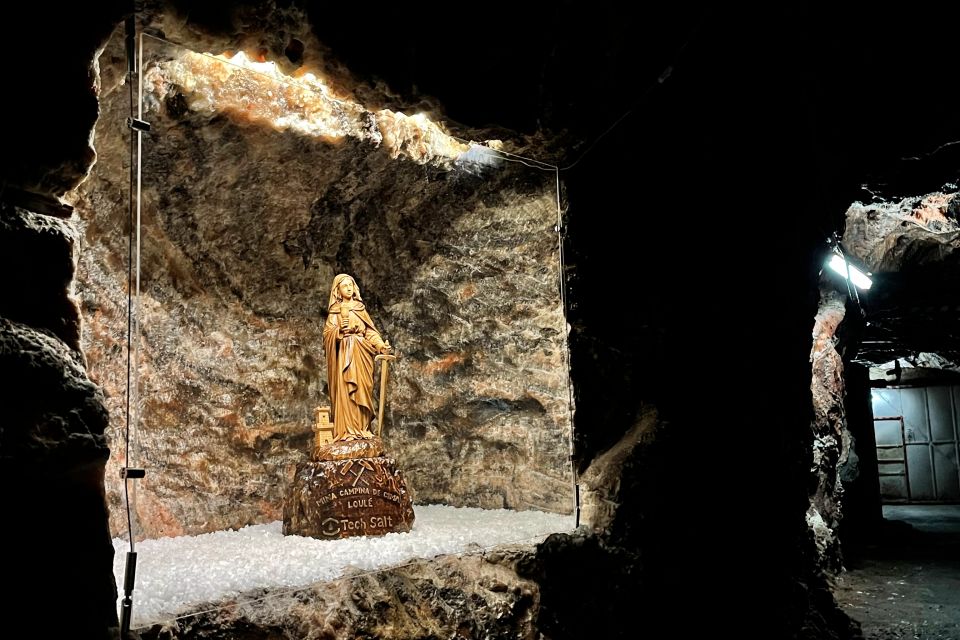Art & Exhibitions
A New Exhibition Opens 100 Feet Below Sea Level
Campina de Cima features shows about the climate crisis and the patron saint of mining.

Campina de Cima, the rock salt mine underneath the city of Loulé in Portugal, provides salt mostly for animal feed and de-icing the roads. However, for the last five years it has also been the only salt mine in the country to open to the public for guided tours of its 25 miles of tunnels.
It has recently taken on a new role as an exhibition space, which was inaugurated on February 17 with ‘Ocean: Sea is Life’, an exhibition by artists from the Portuguese David Melgueiro Association which campaigns for ocean clean-ups. Its website states that the association’s purpose is “to provide operational and logistical support for scientific and technical activities, aimed at preserving the marine environment”.
The mine’s salt galleries lie around 754 feet beneath the city of Loulé and almost 100 feet below sea level, making them Portugal’s deepest tourist site. The salt itself is approximately 230-million-years-old.
Mining activities continue alongside guided tours, which explore the machinery used and the life of Saint Barbara. Legend says that martyr lived in the 4th century and was hidden from sight by her pagan father due to her great beauty. He eventually beheaded her when she converted to Christianity.
Barbara is the patron saint of miners, as well as those in other dangerous careers such as artillerymen and military engineers. There is a tradition in the tunnelling industry of setting up a shrine to the saint underground, to bring protection upon the workers. “Saint Barbara, Patron Saint of Miners and Other Arts” is a permanent exhibition at the Campina de Cima, which also boasts one of the world’s largest collections of object relating to the saint.

Saint Barbara statuette in Campina de Cima mine. Image via My Guide Algarve.
The saint was also the subject of the first-ever art exhibition to be held at the mine, back in 2022. It featured the works of German painter Klaus Zylla, who began focusing on her story during an artist residency in the Algarve.
These various artistic initiatives were put in place by the management company TechSalt SA with the hopes that the mine could become jewel in the crown of the Algarvensis Geopark, which has aspirations to become a UNESCO site. Their website lists TechSalt SA’s mission “to explore and commercialize the rock salt mineral resource at the Campina de Cima mine,” adding that they “want to reuse the mining space in an innovative way, contributing to the dissemination and promotion of Earth Scheinces, Mining Industry, and Art.”
‘Ocean: Sea is Life” closes at the end of April, and tickets to visit the mine are available through TechSalt’s website.





